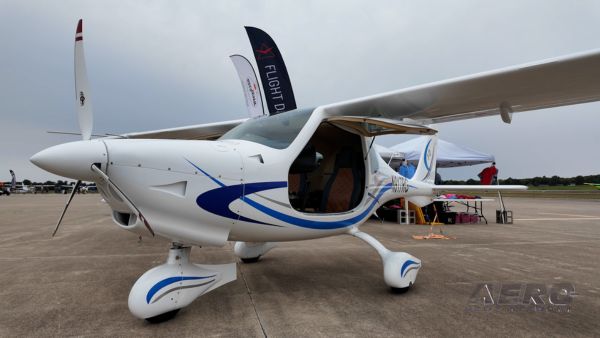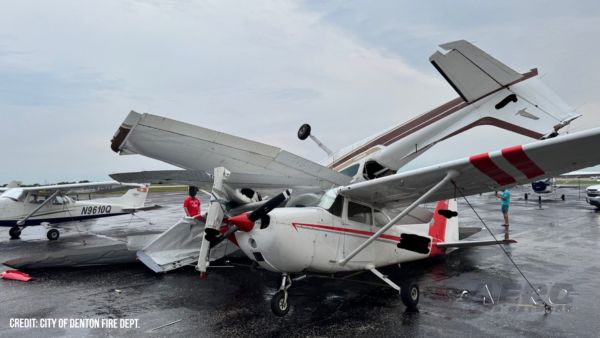Airplane Flew Over The Top Of (Witness) From The East To The West, Then Entered A Nosedive
Location: Bristol, IN Accident Number: CEN24FA170
Date & Time: April 30, 2024, 14:18 Local Registration: N6271F
Aircraft: Ridenour Wendell Ray CH-601 HDS Injuries: 2 Fatal
Flight Conducted Under: Part 91: General aviation - Personal

On April 30, 2024, at 1418 eastern daylight time, a Zodiac CH-601 HDS airplane, N6271F, was destroyed when it was involved in an accident near Bristol, Indiana. The private pilot and pilot-rated passenger were fatally injured. The airplane was operated as a Title 14 Code of Federal Regulations Part 91 personal flight.
The pilot’s wife reported that he and the passenger intended to fly to Branch County Memorial Airport (OEB), Coldwater, Michigan, for lunch and then return to Elkhart Municipal Airport (EKM) Elkhart, Indiana, where the airplane was hangared. She stated that this was a very popular flight for the pilot, and he usually returned within 3 hours. Federal Aviation Administration (FAA) Automatic Dependent Surveillance – Broadcast (ADS-B) data indicated that the airplane originally departed EKM at 1152 and landed at OEB at 1225. The return flight departed OEB at 1339 and proceeded southwest at a cruise altitude about 4,500 ft mean sea level (MSL) and true airspeed about 80 kts. At 14:15:44, the airplane started a descent and continued west toward EKM. During the next 2 minutes, the true airspeed increased to about 110 kts and the average descent rate was about 600 ft per minute (fpm). At 14:17:44 the airplane started a steep descent, the airspeed increased to about 120 kts, and the airplane
descended more than 7,000 fpm. The final data point was recorded at 14:18:05 at an altitude of 1,836 ft MSL (1,072 ft AGL), which was 7 nautical miles (nm) east of EKM, and about 400 ft east of the accident site.
A witness, labeled as witness 1, stated that the airplane flew over the top of him from the east to the west, then entered a nosedive. The engine sounded like it was “cutting in and out” and was not making a consistent sound as it descended. The airplane impacted the ground and made a “loud boom.” At the accident site there was a strong smell of fuel, but there was no smoke or fire. His uncle, witness 2, who did not observe the accident, ran to the site with him and attempted to render aid.
Another witness, witness 3, stated that she was outside of her house facing southeast when she heard the airplane behind her. She turned around and saw the airplane descending straight down toward the ground. She thought she saw the top of the airplane because she didn’t notice any wheels. She did not see any smoke or fire coming from the airplane. The engine was very loud and continued to operate very loud until the impact, which sounded like a loud explosion.
The airplane impacted trees and terrain in a near vertical attitude and nosed over. The left wing exhibited crushing to the leading edge and the outboard half of the wing was bent aft. The right wing sustained impact damage and hydraulic deformation to the inboard leading edge near the fuel tank. The outboard 2 ft of the wing sustained ground impact damage and was bent aft. The elevator and rudder control cables were traced from their control surfaces to the cockpit through cuts near the rear fuselage, which were made by first responders during their extraction efforts. The aileron control cables were continuous from the cockpit to the aileron bellcrank. The engine remained partially attached to the firewall and was crushed into the cockpit.The engine sustained significant impact damage to the front and to the rear accessories, but the case and cylinders remained intact. There were no holes in the case or signs of catastrophic failure. The wooden propeller blades were found shattered and dispersed
around the accident area.
The airplane has been retained for further examination.
 ANN's Daily Aero-Term (09.11.25): Global Navigation Satellite System (GNSS)
ANN's Daily Aero-Term (09.11.25): Global Navigation Satellite System (GNSS) ANN's Daily Aero-Linx (09.11.25)
ANN's Daily Aero-Linx (09.11.25) Aero-News: Quote of the Day (09.11.25)
Aero-News: Quote of the Day (09.11.25) Aero-FAQ: Dave Juwel's Aviation Marketing Stories -- ITBOA BNITBOB
Aero-FAQ: Dave Juwel's Aviation Marketing Stories -- ITBOA BNITBOB Airborne 09.10.25: 1000 Hr B29 Pilot, Airplane Pile-Up, Haitian Restrictions
Airborne 09.10.25: 1000 Hr B29 Pilot, Airplane Pile-Up, Haitian Restrictions



